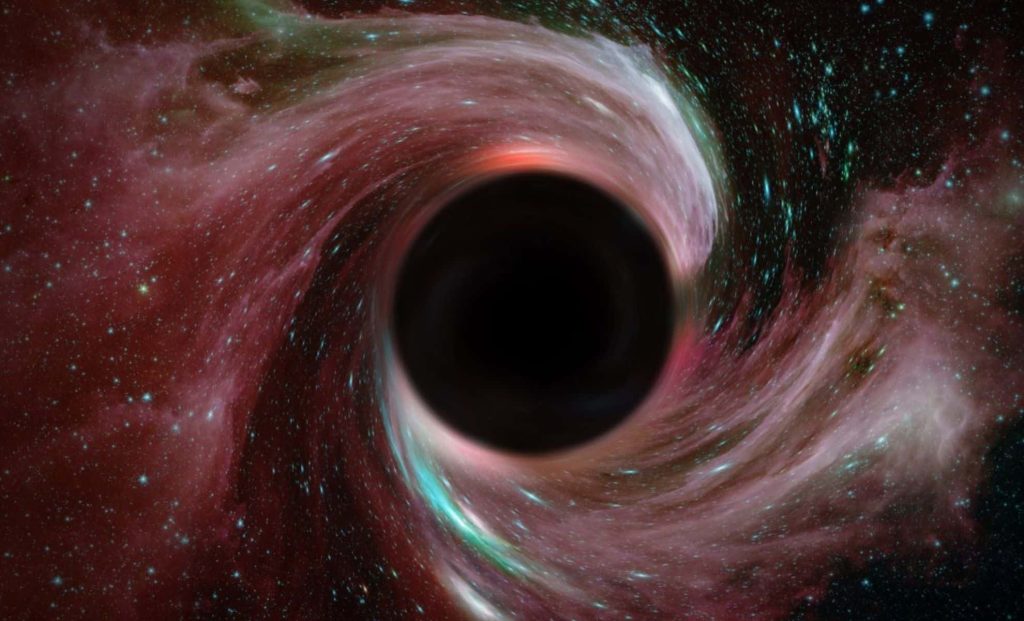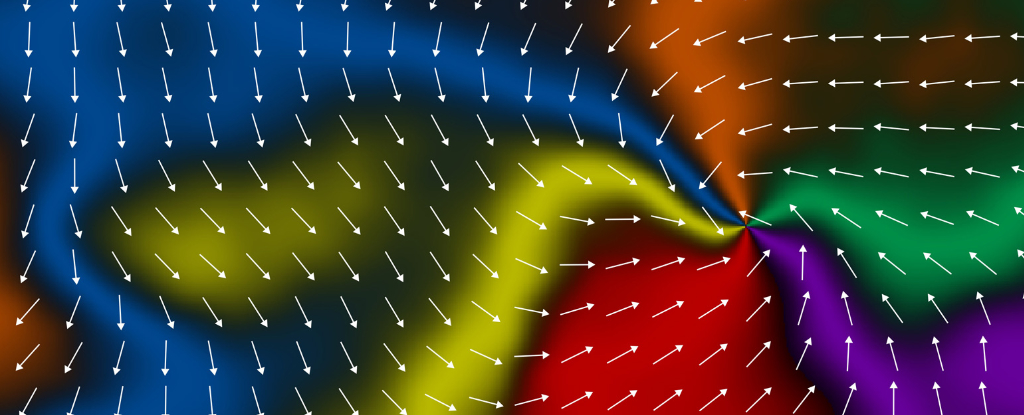Physicists May Have Just Unlocked the Secret of What’s Inside a Black Hole – The Daily Galaxy –Great Discoveries Channel

For decades, black holes have been one of the biggest mysteries in physics—but what if we could finally understand what’s inside them? Using quantum computing and machine learning, physicists have created a mathematical simulation of a black hole’s core, revealing surprising new insights about its structure. Their research suggests that black holes may not be singularities after all, but instead, highly structured quantum states that obey entirely new laws of physics. Could this be the breakthrough that finally unites quantum mechanics and general relativity? The implications could change everything we thought we knew about the universe.Black holes have long been the ultimate cosmic enigma, defying conventional physics and pushing the boundaries of what we understand about space and time. Now, a groundbreaking study led by physicist Enrico Rinaldi at the University of Michigan has used quantum computing and machine learning to peer into the core of black holes, offering new insights into how they function at a fundamental level.By leveraging the holographic principle, which suggests that gravity and quantum mechanics are mathematically equivalent but exist in different dimensions, Rinaldi’s team has developed mathematical models that simulate black hole structures. The study’s findings, published in PRX Quantum, mark a significant step toward uniting quantum mechanics and general relativity—two of the most important yet conflicting theories in physics.This discovery has far-reaching implications, not just for understanding black holes, but also for developing a quantum theory of gravity, which could redefine the way we think about space, time, and the very nature of reality itself.The study used quantum matrix models, mathematical constructs that help simulate the lowest energy state of a quantum system. These models provide insight into how particles behave within black holes, offering a deeper understanding of their structure.“We hope that by understanding the properties of this particle theory through numerical experiments, we understand something about gravity,” Rinaldi explained. However, solving these complex equations manually is nearly impossible, which is why the research team turned to quantum circuits and deep learning algorithms.These quantum circuits act like networks of interconnected “wires”, each representing a qubit, the fundamental unit of quantum information. Gates, which dictate how quantum information flows, are placed within these circuits, allowing the simulation to evolve dynamically.Rinaldi likens this process to composing music:“You can read them as music, going from left to right,” he explains. “If you read it as music, you’re basically transforming the qubits from the beginning into something new each step. But you don’t know which operations you should do as you go along, which notes to play.”By “tuning” these quantum operations, the researchers successfully modeled the ground state of black hole matrix models, revealing new information about their fundamental nature.One of the most intriguing aspects of this research is its connection to the holographic principle—a revolutionary idea that suggests our entire universe may be a projection of quantum information encoded on a lower-dimensional surface.The principle states that:This means that black holes, rather than being singularities that swallow all information forever, may actually store their information on their event horizon, where it can be mathematically reconstructed.While popular science often describes black holes as “bottomless pits” where gravity is so strong that nothing—not even light—can escape, this study suggests a more complex picture.A black hole consists of several key components:What’s inside the singularity remains one of the biggest mysteries in physics. This new research suggests that the core of a black hole may not be a singularity at all, but rather a highly structured quantum state, governed by principles that we are only just beginning to understand.One of the greatest unsolved problems in physics is the unification of general relativity and quantum mechanics.By showing that quantum systems can replicate gravitational behavior, this research brings us closer to a unified theory—one that could explain how black holes work, what happens inside them, and even the true nature of spacetime itself.Rinaldi emphasized that this breakthrough is just the beginning:“Because these matrices are one possible representation for a special type of black hole, if we know how the matrices are arranged and what their properties are, we can know, for example, what a black hole looks like on the inside.”This work could pave the way for entirely new approaches to understanding quantum gravity, with implications that stretch far beyond black holes, potentially revealing new insights about the universe itself.The study is a major milestone, but physicists still have many questions to answer. Next steps in the research include:This groundbreaking research is helping to bridge the gap between quantum mechanics and gravity, opening new doors to understanding the most extreme environments in the universe.Got a reaction? Share your thoughts in the commentsEnjoyed this article? Subscribe to our free newsletter for engaging stories, exclusive content, and the latest news.“…we can know, for example, what a black hole looks like on the inside.”No you can’t. Rinaldi is chasing an epistemological will-o’-the-wisp, as far real science is concerned. We cannot know anything about the ‘inside’ of a BM, or even if it has a geometrically definable inside at all. The realm is instrumentally inaccessible, and when that sort of predicament pertains, the second phase of hypothesis-testing—the testing part—cannot be applied; hypotheses can neither be supported nor falsified.* the ‘inside’ of a BH…Comment Save my name, email, and website in this browser for the next time I comment.
© 2024 | Daily Galaxy | All rights reserved
Source: https://dailygalaxy.com/2025/02/physicists-unlocked-inside-black-hole/



